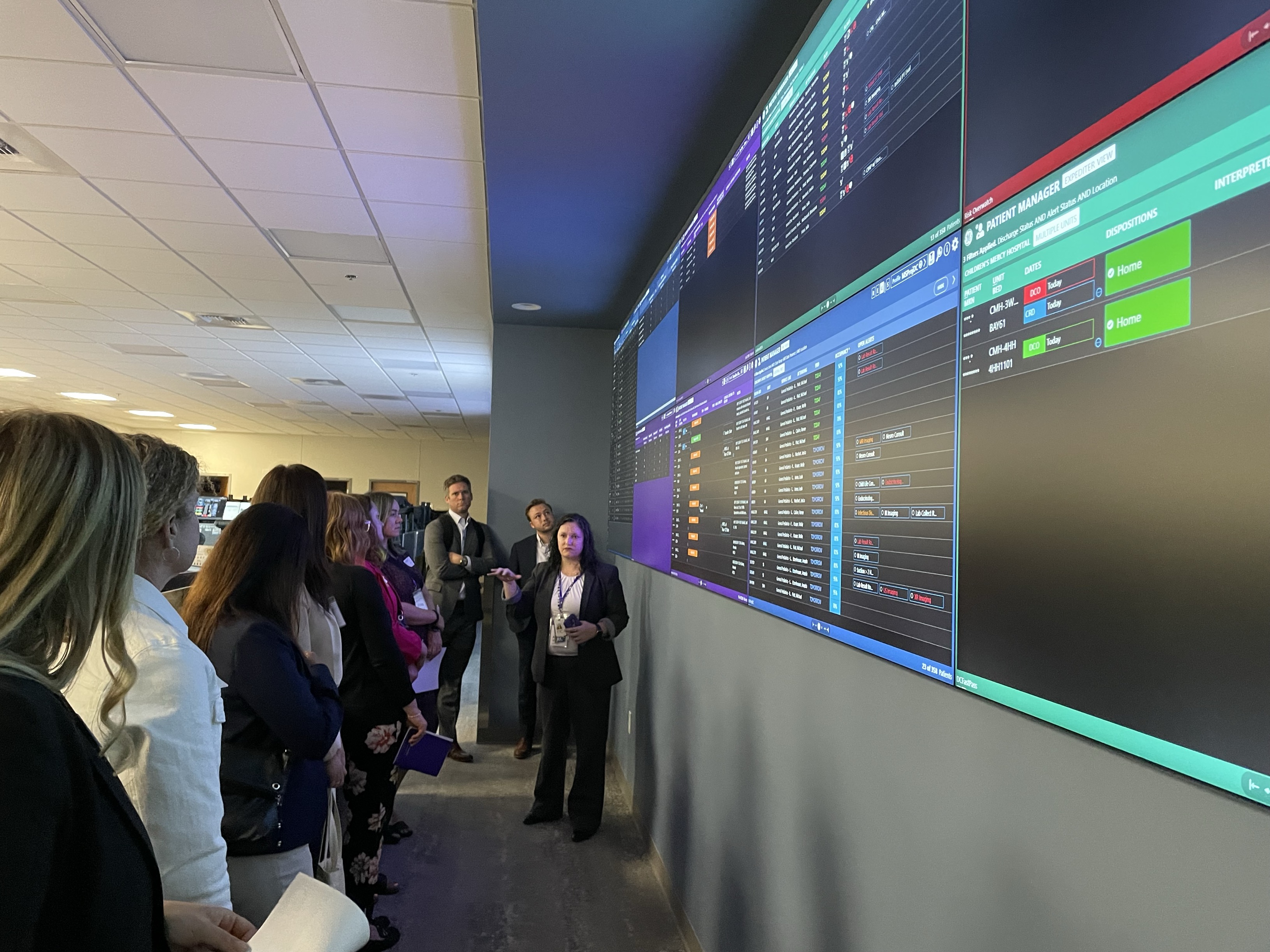Whether it’s supporting hospital capacity planning, pinpointing available equipment from a dashboard or powering handheld ultrasound, tech is providing hospitals and clinicians with information to make informed, data-driven decisions and tools to help respond in the event of a disaster.
Around the world, natural disasters are intensifying both in frequency and in destructive power. According to the World Meteorological Association, the number of extreme weather events—such as hurricanes, tornadoes, floods, droughts and heat waves—has more than quintupled each decade since 1970. The economic cost per event has risen by nearly 77% over the same period, with natural disasters projected to cost $145 billion in 2025 alone.
Financial costs aside, these events can take a heavy toll on human lives and overall health. Between 2010 and 2020, natural disasters affected an average of more than 181 million people annually around the world. And these trends are likely to continue: In a World Economic Forum survey, experts ranked extreme weather as the second-most-likely risk to present a global material crisis in 2025 and the most likely to cause severe harm over the next 10 years.
During such crises, emergency medical response is critical. When disasters strike in or near urban areas, hospitals can become overwhelmed if resources and staff are overtaxed. In rural areas, on the other hand, the nearest healthcare or medical facility may be more than a day’s drive away, which can slow response and limit access to life-saving treatment.
Fortunately, technology is making it easier for healthcare systems and providers to manage crises during natural disasters and emergency events to help protect and treat more people, and support frontline workers. With the aid of technology—in some instances, including artificial intelligence (AI)—hospitals can make real-time, data-informed decisions to address large influxes of patients, while providers in more remote areas can use portable tools to deliver care quickly.
Real-time monitoring and resource management
Amid the chaos of emergency events such as natural disasters, the flow of information can be fragmented, erratic and unreliable. To make life-saving decisions, healthcare systems need to access real-time resource management technology to track available hospital beds and equipment across multiple locations.
For example, in the wake of the COVID-19 pandemic and the 2023 Maui wildfires, leaders at The Queen’s Health System, the largest private healthcare system in Hawaii, realized they needed a better way to coordinate their resources. They established a $4.5 million command center to manage the capacity of the system’s four hospitals and 10,000 care providers.
Such solutions help hospitals and health systems optimize patient flow, streamline operations and make data-driven decisions all at once. Real-time information could also prepare healthcare systems for future emergencies by modeling the surge in patients—and the resources they might require—during and after various types of extreme weather events.
Additional technologies can also pinpoint opportunities to relocate devices and equipment across a health system in response to increased demand due to natural disasters or other crises. “Asset management is critical in ensuring the right assets are in the right place at the right time, so that when disasters hit, facilities are prepared to handle the influx of patients and give them the care they need, says Mohamed El-Demerdash, president, U.S. and Canada Services, GE HealthCare.
Better, faster information tailored to help hospitals and clinical teams can improve care quickly
During disasters, it’s crucial to identify and clear bottlenecks quickly. AI-powered tools can analyze real-time and historical information to predict admission patterns and help determine which entry points could be better managed in a crisis. Information systems can also reveal how many patients are coming in through emergency rooms or procedural areas and predict how long they will stay.
For example, when severe wildfires erupted in Oregon in September 2020, five hospitals had to be evacuated within a 24-hour period. The Oregon Capacity System—a statewide platform for tracking hospital beds and resources—helped identify availability and resources across the state, allowing hospitals in evacuation zones to coordinate patient transfers quickly.
“In a disaster, every second counts. Our Command Center software gives hospitals a real-time and predictive picture of what's happening across their system, so they can quickly move resources around and adapt to a changing situation,” explains Bree Bush, GE HealthCare’s general manager of Command Center. “In the case of Oregon, the statewide capacity system was able to react quickly and coordinate across hospitals within the state to navigate the natural disaster they were facing.”
When disasters strike in remote areas
In rural or hard-to-reach areas where medical care may not be easily accessible, technology can reduce the infrastructure necessary for diagnosis and treatment, improving emergency response.
For example, handheld ultrasound devices are transforming healthcare access in rural areas by enabling portable diagnostic imaging, even on remote islands in Japan and Greece. These compact, easy-to-use tools allow providers to perform on-the-spot scans, reducing the need for patients to travel long distances. In natural disasters and other emergencies, handheld ultrasounds, for example, could help where traditional imaging equipment may be unavailable or impractical.
Creating a more sustainable and resilient healthcare infrastructure
AI-enabled tools can also help reduce mental fatigue and chronic job stress—a pressing challenge in healthcare systems around the world. With at least a quarter of healthcare workers report symptoms of burnout, clinicians who leave the industry cite pressure from natural disasters as one of their top reasons for changing careers. By improving workflow efficiency and reducing cognitive overload, AI-enabled technologies can help enhance clinician wellbeing and retention, which is vital during all types of crises when healthcare personnel can be stretched thin.
Ultimately, these types of technologies, including AI-enabled systems, are contributing to building a more sustainable and resilient healthcare infrastructure. The goal is to make healthcare systems more agile and responsive during disasters, with healthcare workers and clinicians better equipped to handle surges in patient volume and complexity.

